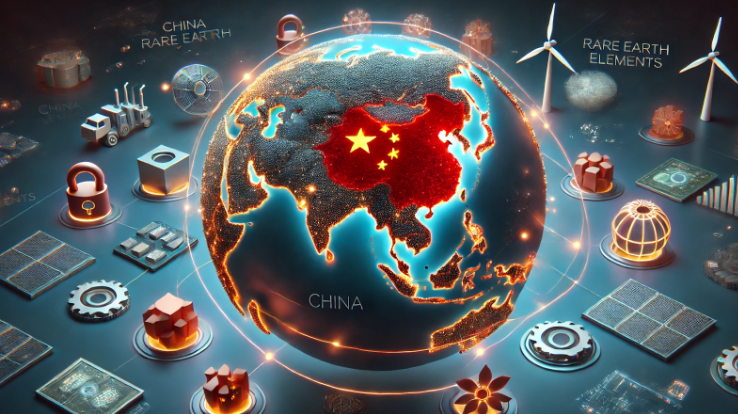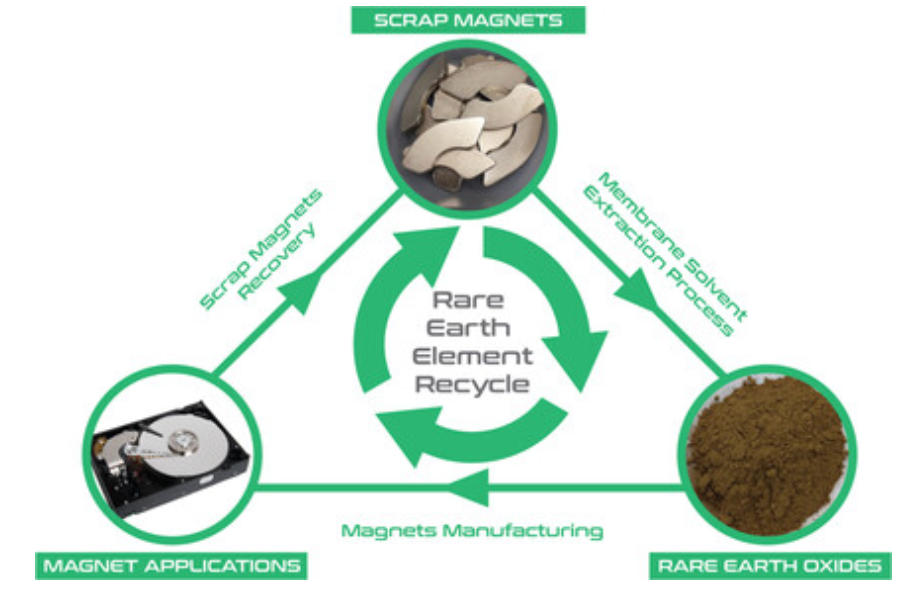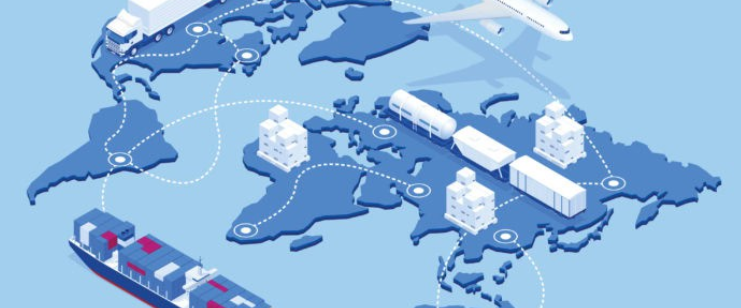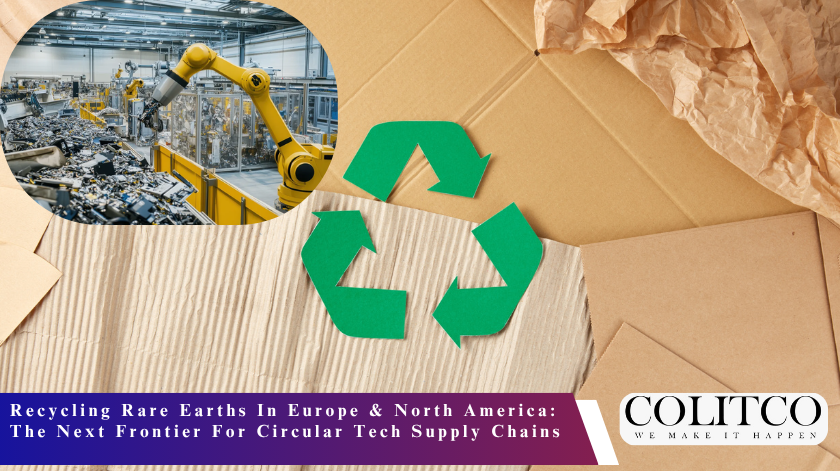Rare earth elements support modern technology, from cell phones to renewable energy. Europe and North America are especially vulnerable. China stands unimpeached as the world’s largest miner, refiner, and producer of magnets for rare earths.
It is this imbalance that endangers economic stability and technological independence on the other side. Recycling of rare earths is therefore proposed as a practical inoculation. It lowers import dependence and sustainably closes the resource loop.
Demand is rapidly scaling. By 2030, neodymium magnet demand globally could potentially triple. Without recycling pathways, supply shortages might jeopardise renewable energy and electric vehicle goals.

Rare earths power technology, with China dominating the global magnet supply.
How Can Europe And North America Build Recycling Capacity?
In Europe, funds for recycling research and industrial pilots are being invested in large sums, while, in the German and French projects, there is an emphasis on rare earth extraction from wind turbine magnets.
Recycling is therefore given an important emphasis within the Critical Raw Materials Act of the EU. Similar initiatives are being carried out by the United States and Canada in North America. Rare earth separation from end-of-life electronics is being funded by the U.S. Department of Energy projects.
Canada recognises fighting alongside recyclers in the mining sector to recover materials from batteries and magnets. These regions together could serve to establish specialised recycling hubs and therefore strengthen localised supply.
What Technologies Drive Rare Earth Recycling Success?
Recycling requires highly advanced chemical and metallurgical methods for the recovery of rare earths. Hydrometallurgical processes dissolve magnets for separation. In contrast, pyrometallurgical techniques involve the recovery of metals by passing them through heat-intensive systems.
Direct reuse is also becoming popular, in which the magnets are refurbished directly, bypassing the chemical treatment processes. Robotics have now been innovated to lead to an efficient disassembly process. Machine learning also assists in sorting valuable components at an industrial scale.
To scale these technologies will require a combination of public funding, private investment, and regulatory assistance. If commercialised, recycling technologies could change supply chains across the globe.

Advanced hydrometallurgical methods enable rare earth recovery through magnet dissolution.
Latest Inventions And Key Facts In Rare Earth Recycling
These extraordinary findings and inventions are now throwing rare-earth recovery into fast-track applications. A French start-up has started solvent-free recycling of magnets, thus preventing chemical waste formation.
In the United States, researchers have engineered bio-based leaching agents to enable sustainable recovery of rare earths. In Japan, engineers are developing automated systems to remove magnets from end-of-life EV motors within minutes.
The facts paint a picture of urgency: the demand for rare earths is stated to surpass 300,000 tonnes by 2030. Analysts posit that recycled rare earths could perhaps cater to 20% of demand in 2040. These inventions bear witness to recycling now graduating from lab tests into industrial-scale programs.
Recycling Rare Earths Strengthens Circular Tech Supply Chains
Recycling of rare earths aids circular economies as the valuable magnets are recovered rather than thrown away and put back into production by industries, lessening the volume of waste and environmental hazards caused by mining.
This also serves as a great stabilising force on costs for the manufacturers of wind turbines, smartphones, and electric vehicles. By recycling, we can both extend the availability of the resource and reduce carbon emissions; the European Union illustrates this model in its efforts to promote ‘closed-loop’ systems.
North America is making recycling efforts to build cleaner and more resilient supply chains as well. A circular supply chain conserves resources and creates green jobs.
Europe And North America Compete For Supply Chain Security
More than 60% of rare earth production is presently controlled by China. China’s refining monopoly exceeds 85%. This situation instils in Europe and North America threats of supply disruptions.
Restrictions in trade or geopolitical disputes could bite into the access. Recycling of rare earths thus offers an insurance policy. With an emphasis on strengthening domestic recycling, these regions would be cushioned from external shocks.
The EU’s Circular Economy Action Plan and the U.S. Inflation Reduction Act, amongst other policies, are cited for fostering resilience. Both regions consider recycling an indispensable tool for technology sovereignty.

EU and U.S. policies promote recycling as key to tech sovereignty.
Recycling Rare Earths Shapes Future Tech Independence
Rare earth recycling is no longer an experiment; it is poised to become an industrial strategy. With the growing use of renewable energy, the growth of electric mobility, and dependence on digital technology, demand for rare earths will increase.
Recycling is thus the route to the sustainable supply chain. Now Europe and North America are investing in research, infrastructure, and partnerships. The issue now is whether we can scale up these solutions fast enough.
If so, the recycling of rare earths is going to secure critical technologies for decades and disincentivise reliance on unpredictable foreign markets.
Also Read: Australia’s Green Metals Revolution: Charting the Road to Battery Superpower by 2030
FAQs
- What are rare earths for?
They are key for making electronics and drones, for use in the renewable energy sector, for defence applications, and for electric vehicles since they power magnets, cell batteries, and sensors.
- Why should rare-earth recycling be given importance?
It cuts down on import reliance, fortifies supply-chain security, and endorses eco-friendly manufacturing in Europe and North America.
- Which are the countries leading in rare-earth recycling?
Europe, the United States, and Canada are promoting recycling; meanwhile, China is also working toward scaling up domestic recycling.
- What processes and techniques are utilised in recycling rare earths?
Hydrometallurgical, pyrometallurgical methods, as well as some direct reuse of materials, are mostly used. Robotic applications and AI are increasingly being employed in disassembling and sorting.
- How does recycling rare earths maintain the circular economy?
By circulating for use the valuable materials, recycling reduces both waste and mining impacts while providing for supply chain resilience.
- Will recycling replace mining?
No, recycling will join mining to fulfil increasing demands.
- What is the outlook for recycled rare earth in the market?
Considering the expansion of the renewable energy and EV sectors, analysts foresee rapid growth in demand for recycled rare earth.












